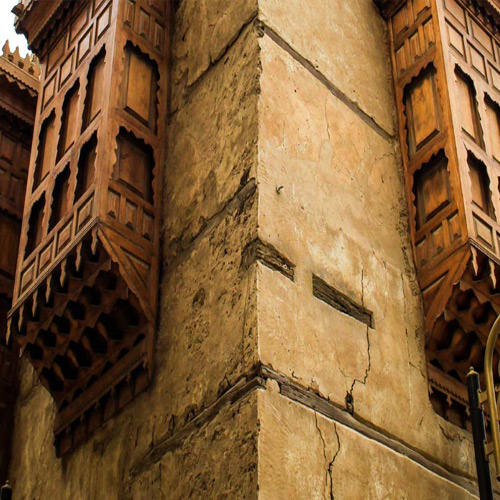Limestone: The Aesthetics of Traditional Stone in Modern Architecture
1. Introduction
Limestone is a type of natural stone that is distinguished by its unique beauty and long history in traditional architecture, as its use dates back centuries, where it was used in the construction of homes and palaces in areas such as Jeddah. With the advent of modern architecture, Manqbi stone still maintains its position as an attractive and distinctive option in the design of interior and exterior spaces.
2. History and Heritage
Limestone dates back to ancient times, where it was widely used in traditional urban architecture. It is characterized by its natural engravings and diverse colors that highlight its unique beauty. This stone is considered a symbol of the cultural and architectural identity of the Kingdom of Saudi Arabia, and is part of the cultural heritage that society seeks to preserve.
3. Properties of Limestone
Colors and Diversity: Limestone is characterized by its warm colors and diverse patterns, making it a suitable choice for many designs. – Its color can range from beige to gray, with natural veins that add a special aesthetic touch.
Texture: Its natural texture and roughness give a sense of authenticity and history, and add depth to architectural spaces.
Sustainability: Limestone is a natural and environmentally friendly material, making it a sustainable choice in the design of modern buildings.
4. Uses of Limestone in Modern Architecture
Facades: Limestone is used in the design of the exterior facades of buildings, adding a traditional and luxurious touch that reflects the cultural identity of the region.
Flooring: It is an ideal choice for interior and exterior floors, thanks to its hardness and resistance to weather factors.
Interior decorations: Limestone is used in the design of interior walls, columns and decorative additions, creating a balance between modernity and heritage.
Gardens and outdoor areas: It can be used in the construction of retaining walls and walkways, enhancing the beauty of gardens and giving a sense of connection with nature.
5. Merging the traditional with the modern
Modern architecture seeks to combine traditional elements with modern design, and limestone represents this combination perfectly. By using it in modern architectural projects, designers can add a touch of history and cultural identity to contemporary designs. It can be combined with modern materials such as glass and iron to produce unique and attractive designs.
6. Conclusion
Limestone is a great example of the aesthetics of traditional stone in modern architecture. Thanks to its aesthetic properties and sustainability, it is an ideal choice for designing spaces that reflect cultural and heritage identity, while remaining in line with the needs of modern design. By using limestone, architects and designers can create spaces that combine elegance, durability and a connection to history, enhancing the value of modern architecture.
For more information about limestone, click here
To go to the store, click here


